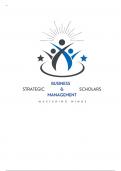, Geography - APHumanGeography II of VII pages
Circle the letter of the Definition that corresponds to the displayed Term.
1. Music festival
A: Physical aspects of culture, including art, tools, buildings, and clothing that are made by people
B Concert event featuring multiple performers and additional entertainment that often lasts more than one
C: Group of belief systems, norms, and values practiced by a people
D: Cultural traits such as dress, diet, and music that identify and are part of today’s changeable,
2. Popular culture
A: The visible human imprint on the landscape
B: Small, homogenous population that is typically rural and cohesive in cultural traits that are passed
C: The location of a place or attribute in reference to another place or attribute
D Cultural traits such as dress, diet, and music that identify and are part of today’s changeable,
3. Ethnic neighborhoods
A Area within an urban area where a relatively large group of people from one ethnic group or local
B: Non physical aspects of culture, including beliefs, practices, aesthetics, and values that are defined by
C: Small, homogenous population that is typically rural and cohesive in cultural traits that are passed
D: The visible human imprint on the landscape
4. Stimulus diffusion
A A process of diffusion where two cultural traits blend to create a distinct trait
B: Spread of an idea or innovation from one person or place to another person or place based on a
C: People who see themselves as a collective or a community, share experiences, customs, and traits, and
D: Physical aspects of culture, including art, tools, buildings, and clothing that are made by people
5. Gentrification
A: The layout of a city, including the sizes and shapes of buildings and the pathways of infrastructure
B Renewal or rebuilding of a lower income neighborhood into a middle- to upper-class neighborhood,
C: South Korean waves of popular culture, especially in music, television, and movies
D: Decreasing likelihood of diffusion with greater distance from the hearth
6. Folk Culture
A Small, homogenous population that is typically rural and cohesive in cultural traits that are passed
B: Non physical aspects of culture, including beliefs, practices, aesthetics, and values that are defined by
C: Group of belief systems, norms, and values practiced by a people
D: When a minority group loses distinct cultural traits, such as dress, food, or speech, and adopts the
Geography - 2024/25 2024/2025 Edition




